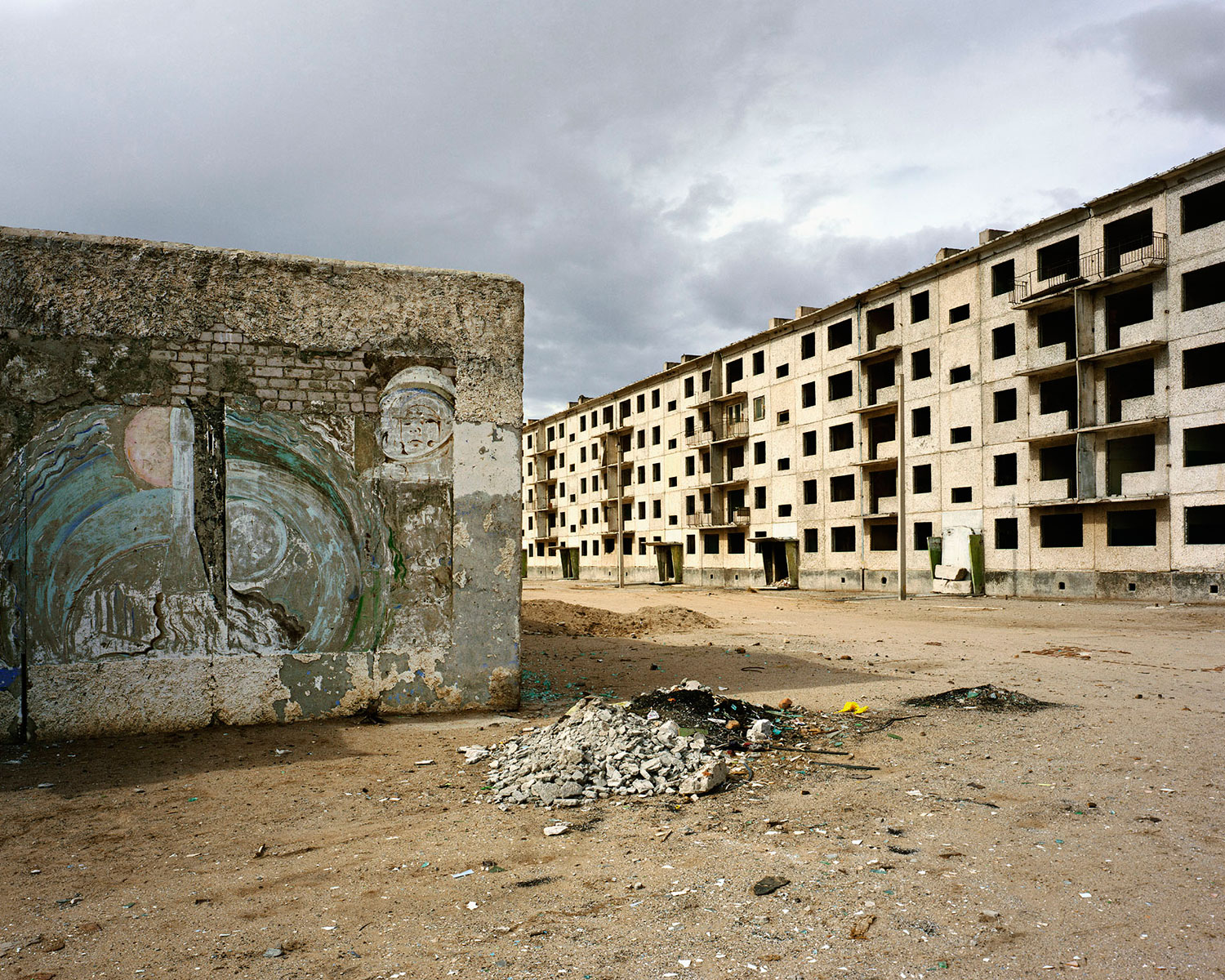Lost empire: Eric Lusito searched for abandoned Soviet military bases. What he found was amazing
When does it make sense to speak of the “ruins” of the Soviet empire? The pristinely preserved Lenin Mausoleum on Red Square or the luxury apartments in Moscow’s Stalinist “Seven Sisters” skyscrapers are clearly architectural artefacts of a former time but they have been retained and commodified. Indeed, most of the Soviet built environment is still in effect. Having been a titanic modernising force across much of the globe — with all the violence and co-option that this entailed — Soviet power has left thousands of buildings that are a part of the present as much as they are of the past, which cannot be said of true “ruins”.
The derelict military facilities visited by Eric Lusito for his Traces of the Soviet Empire series, however, certainly qualify. Here we are reminded anew of the cultural function of ruins: emblems of vanished convictions, fragments of a past that projected a very different future. Simply bearing witness to these previously secret locations relegates them to the past in a way that cannot be said of concrete housing blocks or defaced Lenin statues: these were buildings not supposed to be seen but still intended to carry out the operations of power. Now they are powerless to prevent the curious photographer’s gaze.
Is it easier to read military sites as aesthetic objects once they are divested of their violent purpose? Decked with performative symbols and slogans of military might — a sword sculpture in Mongolia, the words “Victory starts here!” in a Latvian sports hall — at points these photographs resemble abandoned stage sets. Indeed, occasionally Lusito comes across a real theatre within these complexes, long since vacated of spectators and actors.
The locations themselves are situated in disappeared imperial space: most of Lusito’s sites are not in Russia, but Mongolia, Kazakhstan, the Baltics. They no longer serve any use to Moscow, nor to their new national governments. Missile silos stationed in Mongolia during years of Sino-Russian tensions seem ironic today, when the Kremlin is increasingly tied to Beijing in economic terms and it is the western and southern fronts of Ukraine and Syria that require military oversight.
Developing abandoned negatives from some sites provided Lusito with a ghostly human element. Like Pompeii, these ruins retain their faces. These, and the relatively tiny time span it took for these state institutions to crumble, allow us to read the sites more legibly than other, older archaeological sites. In the words of Francis Conte, Professor of Russian Studies at the Paris-Sorbonne, Lusito’s work “transforms traces into signs and ruins into vestiges.”
Text: Samuel Goff
Image: Eric Lusito
















